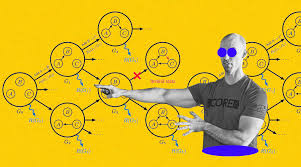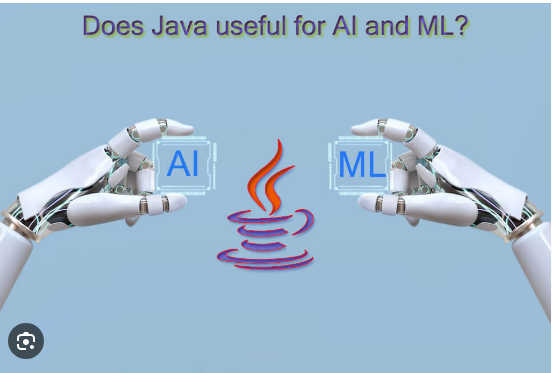Introduction
Generative Flow Networks are an emerging framework in deep learning that offers a novel approach to generating diverse and high-quality samples from structured probability distributions. Unlike traditional generative models such as GANs and VAEs, applications of gflownets in machine learning focus on generating samples proportionally to a given reward function, enabling efficient exploration of complex solution spaces. This unique property makes them highly valuable in various applications across machine learning.
In this article, we explore how GFlowNets are applied in different domains of machine learning, including reinforcement learning, drug discovery, combinatorial optimization, probabilistic modeling, and more.
1. Reinforcement Learning
In applications of gflownets in machine learning have significant applications in reinforcement learning, particularly in scenarios requiring exploration of diverse solution spaces. Traditional RL algorithms, such as policy gradients and Q-learning, tend to optimize for a single high-reward solution. However, in many real-world applications, multiple optimal solutions exist, and a diverse set of policies is desirable.
Key Contributions in RL:
- Exploring Multi-Modal Reward Landscapes: GFlowNets enable learning policies that generate actions with probabilities proportional to their rewards, encouraging exploration of diverse strategies rather than converging prematurely to a single solution.
- Efficient Experience Replay: GFlowNets can be used to sample diverse trajectories in RL environments, improving sample efficiency and policy generalization.
- Multi-Agent Coordination: In multi-agent RL, GFlowNets help discover diverse equilibrium strategies, facilitating better coordination among agents.
2. Drug Discovery and Molecular Generation
Implementations of GFlowNets in AI
One of the most promising applications of applications of gflownets in machine learning is in drug discovery, where generating diverse and novel molecular structures is critical for finding effective therapeutics. Traditional generative models like VAEs and GANs often struggle with mode collapse, limiting their ability to explore the full space of possible molecules. GFlowNets, on the other hand, ensure that molecules are sampled proportionally to their effectiveness, leading to better exploration and optimization.
Advantages in Drug Discovery:
- Diverse Molecule Generation: Ensures that different high-reward molecules are discovered, rather than being stuck in local optima.
- Efficient Exploration of Chemical Space: Enables efficient navigation of large molecular spaces, identifying novel compounds with desired properties.
- Scalability: GFlowNets can handle large-scale chemical databases, making them highly scalable for real-world applications.
3. Combinatorial Optimization
Practical Uses of GFlowNets in Machine Learning
Combinatorial optimization problems, such as the traveling salesman problem (TSP) and knapsack problem, require efficient search strategies. Traditional optimization algorithms, including greedy approaches and Monte Carlo Tree Search (MCTS), often focus on finding a single optimal solution. GFlowNets, by contrast, allow exploration of multiple high-quality solutions simultaneously.
Use Cases in Optimization:
- Neural Architecture Search (NAS): GFlowNets enable the discovery of diverse neural network architectures that perform well on a given task.
- Circuit Design and Hardware Optimization: Helps in designing efficient hardware circuits by exploring various architectural configurations.
- Graph Optimization Problems: Finds optimal paths, matchings, and partitions in graph-based optimization problems.
4. Probabilistic Modeling and Bayesian Inference
Bayesian inference plays a crucial role in machine learning by providing a principled approach to uncertainty estimation applications of gflownets in machine learning can be used to approximate complex posterior distributions in Bayesian models, enabling more efficient inference compared to traditional Markov Chain Monte Carlo (MCMC) methods.
Benefits in Probabilistic Modeling:
- Approximate Bayesian Inference: GFlowNets generate samples from posterior distributions without requiring expensive Markov chains.
- Uncertainty Quantification: Helps quantify uncertainty in predictive models, leading to more robust decision-making.
- Bayesian Neural Networks: Enables efficient sampling of diverse sets of neural network weights, improving generalization.
5. Data Augmentation and Synthetic Data Generation
Generating synthetic data that resembles real-world distributions is critical in many applications, including computer vision, natural language processing, and robotics. GFlowNets provide a principled way to generate diverse synthetic data points while ensuring their relevance to the target task.
Key Applications:
- Image Synthesis: Generates diverse images with variations that improve robustness in computer vision models.
- Text Generation: Produces synthetic text samples that help train NLP models on low-resource languages or domain-specific corpora.
- Simulated Environments for Robotics: Helps create diverse robotic simulation environments for training autonomous agents.
6. Few-Shot and Meta-Learning & Machine Learning
Few-shot learning aims to generalize from a small number of examples, and meta-learning seeks to learn how to learn efficiently across tasks applications of gflownets in machine learning can enhance these paradigms by generating diverse and informative training samples, facilitating better generalization.
Role in Few-Shot Learning:
- Diverse Task Sampling: Ensures that meta-learners are exposed to a wide variety of tasks, improving adaptability.
- Augmenting Training Data: Helps generate synthetic examples that resemble real-world distributions, reducing overfitting.
- Exploring Model Hyperparameters: Finds diverse hyperparameter configurations that generalize well across tasks.
7. Program Synthesis and Automated Code Generation
Automated program synthesis involves generating code that meets specific functional requirements. GFlowNets can be applied in this domain to sample diverse candidate programs, improving the efficiency of automated programming systems.
Applications in Code Generation:
- Generating Diverse Code Snippets: Helps in training models that generate functionally correct and diverse programs.
- Optimizing Compiler Settings: Explores different compiler configurations to optimize code performance.
- Automated Bug Fixing: Generates potential patches for fixing software bugs.
8. Game AI and Strategy Exploration
In game AI, exploring diverse strategies is essential for developing robust agents. GFlowNets provide a structured way to sample diverse strategies proportionally to their effectiveness, leading to better generalization in competitive environments.
Contributions to Game AI:
- Exploring Diverse Strategies: Prevents overfitting to a single playstyle and encourages adaptive gameplay.
- Enhancing Procedural Content Generation: Generates diverse game levels, characters, and challenges.
- Optimizing Player Experience: Personalizes game difficulty by generating content based on player performance.
Conclusion
In applications of gflownets in machine learning represent a groundbreaking approach in machine learning by enabling efficient and diverse sampling from structured probability distributions. Their applications span reinforcement learning, drug discovery, combinatorial optimization, probabilistic modeling, synthetic data generation, few-shot learning, program synthesis, and game AI. By leveraging GFlowNets, researchers and practitioners can unlock new possibilities in machine learning, ensuring better exploration of complex solution spaces and more effective model generalization. As research in this field progresses, we can expect even more innovative applications to emerge, further expanding the impact of GFlowNets in AI and beyond.








Leave feedback about this